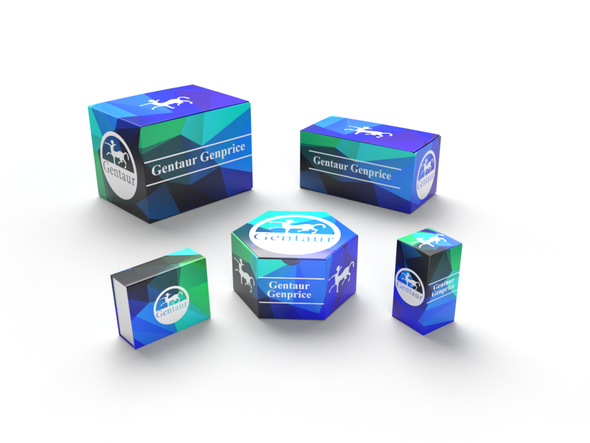749
Human SLAM family member 7 (SLAMF7) ELISA Kit | KTE60645
- SKU:
- 749-KTE60645
- Availability:
- Usually ships in 5 working days
Description
Human SLAM family member 7 (SLAMF7) ELISA Kit | KTE60645 | Gentaur UK, US & Europe Distribution
Application: This Human SLAM family member 7 (SLAMF7) ELISA Kit employs a two-site sandwich ELISA to quantitate SLAMF7 in samples. An antibody specific for SLAMF7 has been pre-coated onto a microplate. Standards and samples are pipetted into the wells and anySLAMF7 present is bound by the immobilized antibody. After removing any unbound substances, a biotin-conjugated antibody specific for SLAMF7 is added to the wells. After washing, Streptavidin conjugated Horseradish Peroxidase (HRP) is added to the wells. Following a wash to remove any unbound avidin-enzyme reagent, a substrate solution is added to the wells and color develops in proportion to the amount of SLAMF7 bound in the initial step. The color development is stopped and the intensity of the color is measured.
Detection Method: Colorimetric
Conjugate: N/A
Sample Type: Cell culture supernatants#Serum#Plasma#Other biological fluids
Assay Type: Multiple steps standard sandwich ELISA assay with a working time of 3-5 hours. It depends on the experience of the operation person.
Kit Component: • Human SLAM family member 7 microplate
• Human SLAM family member 7 standard
• Human SLAM family member 7 detect antibody
• Streptavidin-HRP
• Standard diluent
• Assay buffer
• HRP substrate
• Stop solution
• Wash buffer
• Plate covers
Features & Benefits: Human SLAM family member 7 (SLAMF7) ELISA Kit has high sensitivity and excellent specificity for detection of Human SLAMF7. No significant cross-reactivity or interference between Human SLAMF7 and analogues was observed.
Calibration Range: Please inquire
Limit Of Detection: Please inquire
Usage Note: • Do not mix components from different kit lots or use reagents beyond the kit expiration date.
• Allow all reagents to warm to room temperature for at least 30 minutes before opening.
• Pre-rinse the pipet tip with reagent, use fresh pipet tips for each sample, standard and reagent to avoid contamination.
• Unused wells must be kept desiccated at 4 °C in the sealed bag provided.
• Mix Thoroughly is very important for the result. It is recommended using low frequency oscillator or slight hand shaking every 10 minutes.
• It is recommended that all samples and standards be assayed in duplicate or triplicate.
Storage Instruction: The unopened kit should be stored at 2 - 8°C. After opening, please store refer to protocols.
Shipping: Gel pack with blue ice.
Precaution The product listed herein is for research use only and is not intended for use in human or clinical diagnosis. Suggested applications of our products are not recommendations to use our products in violation of any patent or as a license. We cannot be responsible for patent infringements or other violations that may occur with the use of this product.
Background: Sequence analysis predicted that the 335-amino acid transmembrane protein has a 225-residue extracellular domain, which has 7 putative N-linked glycosylation sites, and an 85-amino acid cytoplasmic domain, which contains 2 of the consensus tyrosine motifs and a third C-terminal tyrosine motif that has phe instead of thr. Functional analysis indicated that CRACC mediates lysis that is in addition to that mediated by NKP46 or CD16. Further analysis determined that, unlike CD244, cytotoxicity mediated by CRACC or NKP46 is SAP-independent and that CRACC triggers ERK activation. Immunoblot analysis showed that CRACC is tyrosine phosphorylated in activated NK cells and is associated with 19- and 39-kD proteins.
Alternative Names: SLAMF7; 19A; CD319; CRACC; CS1; 19A24 protein; CD2-like receptor activating cytotoxic cells; novel LY9 (lymphocyte antigen 9) like protein
Search name: SLAMF7; 19A; CD319; CRACC; CS1; 19A24 protein; CD2-like receptor activating cytotoxic cells; novel LY9 (lymphocyte antigen 9) like protein
Tag: SLAMF7










